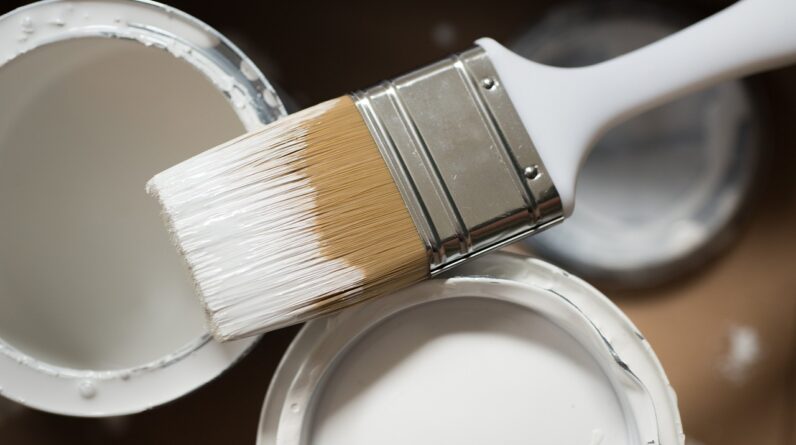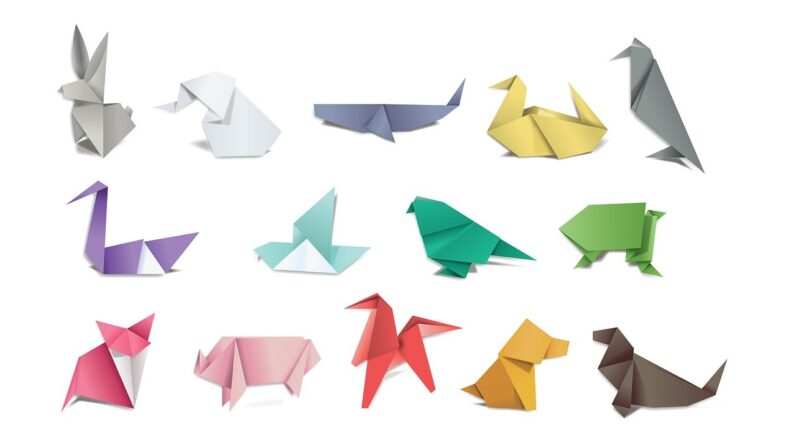
Let’s embark on a colorful journey together in “The World of Weaving: A Beginner’s Guide.” In this article, we’ll dive into the rich history and intricate techniques of this timeless craft. We’ll learn about the essential tools you’ll need, explore a variety of basic and advanced weaving patterns, and find inspiration in the creativity that weaving offers. Whether we’re just starting out or looking to refine our skills, this guide is designed to be our go-to resource for all things weaving. Let’s weave some magic!
Have you ever looked at a beautifully woven fabric and wondered how it’s made? Well, you’ve come to the right place! We’re excited to dive into the fascinating world of weaving. Yes, the phenomenal art that has been around for centuries, forming the backbone of textiles in our everyday lives.
Welcome to “The World of Weaving: A Beginner’s Guide”. With this guide, we’re aiming to unravel (pun intended!) all the basics and nuances of weaving, making it approachable for anyone curious about this ancient craft.
What is Weaving?
Weaving is the method of interlacing two sets of threads, known as the warp and the weft, to create fabric. The warp threads run lengthwise, while the weft threads run across them, and it’s this weaving together that forms the magical textiles we see and use every day.
Weaving can be as simple or intricate as our imaginations allow, from basic cotton cloth to intricate tapestries. And the exciting part? Once we grasp the basics, the possibilities are endless.
The History of Weaving
Ancient Origins
Weaving dates back to prehistoric times. We can trace its roots to around 6000 BC in Neolithic cultures, where our ancestors used weaving to create baskets and, eventually, garments. It’s fascinating to think that such a fundamental technique stayed relatively unchanged for thousands of years, evolving along with the societies that relied on it.
Evolution through the Ages
As civilizations advanced, so did weaving techniques and technologies. The invention of the loom in the Bronze Age marked a significant milestone, allowing for greater efficiency and complexity in woven products. Fast forward to the Industrial Revolution, the power loom mechanized weaving, revolutionizing textile manufacturing and paving the way for modern weaving practices.

Types of Weaving
When it comes to weaving, there’s a rich variety of techniques and styles to explore. Let’s delve into some of the main types to give us a well-rounded understanding.
Plain Weave
The plain weave is the most basic and straightforward of all weaving patterns. Each weft thread passes over and under each warp thread, alternating row by row. This creates a simple criss-cross pattern, and it’s utilized in many everyday fabrics like muslin and broadcloth.
Twill Weave
The twill weave is characterized by its diagonal rib pattern, formed by passing the weft thread over one or more warp threads and then under two or more warp threads. This method results in a sturdier and more flexible fabric. Think of those comfortable jeans we love to wear – they’re made with a twill weave.
Satin Weave
Satin weave fabrics are known for their smooth, glossy surface. This effect is achieved by weaving so that each weft thread floats over several warp threads before interlacing, minimizing interlacings and thus creating a lustrous appearance.
Jacquard Weave
The Jacquard weave is named after the inventor Joseph Marie Jacquard, who revolutionized the industry with his invention of the Jacquard loom. This complex weave allows for intricate patterns and designs by controlling each warp thread individually. The results can be quite breathtaking, often seen in decorative fabrics.
Basket Weave
In a basket weave, two or more warp threads go over and under two or more weft threads, creating a checkerboard-like pattern. It’s similar to the plain weave but with a chunkier texture, often used in canvas and heavy-duty fabrics.
Essential Equipment and Tools
Before we get our hands dirty, it’s essential to understand the tools needed for weaving. The equipment ranges from simple, hand-operated devices to more complex, machine-operated looms.
Looms
The loom is the cornerstone of any weaving project. There are several types, each suited for different kinds of weaving techniques and fabric types.
| Type of Loom | Description | Best For |
|---|---|---|
| Frame Loom | Simple wooden frame; good for small projects | Beginners, small-scale tapestries |
| Rigid Heddle Loom | Portable and versatile | Beginners to intermediate, scarves, shawls |
| Floor Loom | Larger, more complex; foot pedals to operate | Advanced weavers, large-scale fabrics, rugs |
| Table Loom | Smaller, placed on table; hand-operated | Intermediate, smaller home textiles |
| Backstrap Loom | Traditional, uses body tension | DIY enthusiasts, cultural weaving techniques |
Shuttles
Shuttles carry the weft thread through the warp threads. There are different types tailored to specific looms and projects.
- Stick Shuttle: Simplistic and easy to use, ideal for small looms.
- Boat Shuttle: Holds more yarn, suitable for larger projects and floor looms.
- End-Feed Shuttle: Allows for continuous yarn feed, enhancing efficiency.
Warping Tools
Warping tools help us set up our loom by organizing the warp threads properly. These include warping boards, pegs, and reels.
Beaters
The beater is used to press the weft threads tightly into place. It can be incorporated into the loom or used as a hand tool.
Tapestry Needles
For finer details and intricate designs, tapestry needles let us work manually on specific areas of the fabric.
Yarn and Threads
Selecting the right yarn or thread is crucial. Yarn comes in various materials—cotton, wool, silk, and synthetics—all offering unique textures and qualities.

Getting Started: Setting Up the Loom
Warping the Loom
Warping the loom is the first step in any weaving project. It might seem daunting at first, but with practice, it becomes second nature.
- Choosing Yarn: Opt for a strong, durable yarn for the warp, as it needs to withstand tension.
- Measuring Warp Length: Decide on the length of the fabric and add extra length for tying and wasting, known as warp waste.
- Warping Board/Peg Setup: Use a warping board or pegs to measure and organize the warp threads.
- Threading the Loom: Carefully thread each warp thread through the heddles (string or wire loops attached to the loom’s shafts) and then through the reed (a comb-like device that keeps threads evenly spaced).
- Tying onto the Front Beam: Once threaded, tie the warp threads onto the loom’s front beam, ensuring they are evenly tensioned.
Adjusting Tension
Maintaining even tension throughout the weaving process is crucial for an even fabric. Regularly check and adjust the tension to avoid loose or overstretched threads.
Basic Weaving Techniques
Now that we’re set up, let’s explore some basic weaving techniques to get started.
Plain Weaving
- Insert the Shed Stick: Raise half the warp threads using the loom’s shafts or shed stick to create a gap (shed).
- Pass the Shuttle: Run the shuttle carrying the weft yarn through the shed.
- Beat the Weft: Use the beater to push the weft thread firmly into place.
- Change the Shed: Alternate the raised warp threads by changing the shed and repeat the process.
Twill Weaving
The twill pattern is created by varying the shed lifting sequence.
- Create a Pattern: Lift two or more warp threads and pass the shuttle through.
- Sequential Lifting: Change the order of lifted warp threads in a sequence (e.g., over one, under two).
- Consistent Beating: Keep an even beat to ensure a uniform diagonal pattern.
Adding Patterns and Designs
Experimenting with colors and textures can add depth and interest to our weaving projects.
- Color Stripes: Change weft thread colors to create stripes.
- Supplementary Weft: Add extra weft threads to form designs and motifs.
- Pickup Sticks: Use pickup sticks to manually lift specific warp threads for detailed patterns.

Troubleshooting Common Issues
As with any craft, weaving comes with its own set of challenges. Here’s how we can tackle some common issues.
Uneven Edges
Uneven edges, known as “draw-in,” occur when the weft threads are pulled too tightly.
- Solution: Maintain consistent weft tension and avoid pulling too hard on the shuttle.
Broken Warp Threads
Broken warp threads can disrupt the weaving process.
- Solution: Re-tie or replace broken threads, ensuring they are the same length as the rest of the warp.
Loose Tension
Loose tension can result in a floppy fabric.
- Solution: Regularly adjust the warp tension, ensuring it remains even throughout the weaving process.
Advancing Your Skills
Exploring Complex Patterns
Once we’re comfortable with basic techniques, we can explore more complex patterns such as herringbone, diamonds, and other intricate designs. Pattern books and online resources provide numerous ideas and instructions.
Weaving with Different Materials
Experimenting with different yarns and materials can lead to unique textures and effects. Try incorporating metallic threads, ribbons, or even unconventional materials like paper and fabric strips for artistic flair.
Joining Weaving Communities
Joining weaving communities, both online and in-person, can significantly enhance our learning experience. These communities offer a wealth of knowledge, support, and inspiration from fellow weavers at various skill levels.
The Therapeutic Benefits of Weaving
Besides being a creative outlet, weaving offers numerous therapeutic benefits. The repetitive motions and focus required in weaving can promote mindfulness and relaxation, similar to meditation. It can also boost our sense of accomplishment and enhance our overall well-being.
Sustainable Weaving Practices
Embracing sustainable practices in weaving helps us contribute to an eco-friendly world.
- Use Natural Fibers: Opt for natural, biodegradable fibers like cotton, wool, and silk.
- Upcycle Materials: Repurpose old fabrics and materials for new weaving projects.
- Support Local Artisans: Purchase materials from local, ethically-sourced suppliers.
Conclusion
Weaving is a timeless craft that connects us to our heritage while providing endless opportunities for creativity and personal expression. From understanding the basics of setting up a loom to exploring advanced techniques and patterns, we’ve covered the fundamental aspects of this awe-inspiring art.
So why not grab some yarn, set up a loom, and start weaving our own masterpieces? Whether we’re seeking a new hobby, a therapeutic activity, or a sustainable way to create beautiful textiles, the world of weaving is rich with possibilities waiting to be discovered.
We hope this beginner’s guide has fired up our interest and provided us with the foundational knowledge to embark on our weaving journey. Happy weaving!







